The Green Man
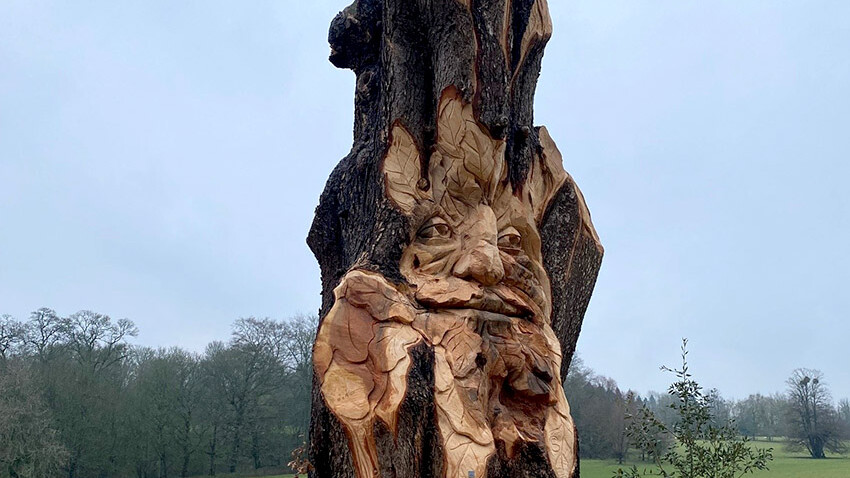
The Green Man
 Driving through the gates and into the park, the road curves round and down, offering distant glimpses of the Castle. After a mile or so, a sign directs you to the left where the road leads up a slope between some great cedars and oak trees, some younger, some older.
The cedars are vulnerable in stormy weather as they are almost too greenly magnificent. Sometimes we lose boughs and occasionally the entire tree. Six months ago, in another storm, one of the enormous cedars on the left cracked in half. Most of it was condemned by the tree surgeon and we could only save the trunk, now an approximately 18ft high stump.
Looking at the wreckage, I then had “a bright idea”, the thought of which always causes concern for my husband, although only if he knows of course. In 2018, the wood sculptor Simon O’Rouke carved the Cedar Airman Memorial which sits in the Wild Flower Meadow from the remains of another earlier fallen cedar. My new idea was to ask Simon to come back and sculpt the face of a huge Green Man into the trunk of the cedar, over which and around I can then grow roses and honeysuckle up.
Driving through the gates and into the park, the road curves round and down, offering distant glimpses of the Castle. After a mile or so, a sign directs you to the left where the road leads up a slope between some great cedars and oak trees, some younger, some older.
The cedars are vulnerable in stormy weather as they are almost too greenly magnificent. Sometimes we lose boughs and occasionally the entire tree. Six months ago, in another storm, one of the enormous cedars on the left cracked in half. Most of it was condemned by the tree surgeon and we could only save the trunk, now an approximately 18ft high stump.
Looking at the wreckage, I then had “a bright idea”, the thought of which always causes concern for my husband, although only if he knows of course. In 2018, the wood sculptor Simon O’Rouke carved the Cedar Airman Memorial which sits in the Wild Flower Meadow from the remains of another earlier fallen cedar. My new idea was to ask Simon to come back and sculpt the face of a huge Green Man into the trunk of the cedar, over which and around I can then grow roses and honeysuckle up.  If you look about an ancient church, at the carved stonework on either the inside or the outside of the building, or at the detail of the decorative wooden carvings tucked around corners, you can often see the representation of a face surrounded by leaves, vines, flowers, fruit or branches.
If you look about an ancient church, at the carved stonework on either the inside or the outside of the building, or at the detail of the decorative wooden carvings tucked around corners, you can often see the representation of a face surrounded by leaves, vines, flowers, fruit or branches. Sometimes these carvings are more obvious and at other times partly disguised but they are found everywhere. For example, over one hundred Green Men are carved into the 15th-century Rosslyn Chapel in Scotland.
Sometimes these carvings are more obvious and at other times partly disguised but they are found everywhere. For example, over one hundred Green Men are carved into the 15th-century Rosslyn Chapel in Scotland. The Green Man is a legendary figure symbolising rebirth and represents the cycle of new growth that occurs every spring. Whilst often incorporated into ecclesiastical buildings, he also suggests a much older pagan heritage essential to the intrinsic connection of our ancestors to the land and woodland. Green men were woven into Roman mosaics and the Egyptian God Osiris regarded as a “grain” deity, is depicted with a green face representing the annual inundation of the Nile which bought growth and fertility to the fields of Egypt.
The Green Man is a legendary figure symbolising rebirth and represents the cycle of new growth that occurs every spring. Whilst often incorporated into ecclesiastical buildings, he also suggests a much older pagan heritage essential to the intrinsic connection of our ancestors to the land and woodland. Green men were woven into Roman mosaics and the Egyptian God Osiris regarded as a “grain” deity, is depicted with a green face representing the annual inundation of the Nile which bought growth and fertility to the fields of Egypt. The Green Man is often cast as Earth's spiritual protector and is part of common folklore.
Following the heavy industrialisation of the 18th and 19th centuries, his story and status was revived as part of a romanticised traditional past. In a Christmas Carol, Charles Dickens describes Christmas Present who “wore deep green robe, or mantle” “a holly wreath, set here and there with shining icicles. Its dark brown curls were long and free”. He did seem quite jolly but he was also intimidating.
It was fascinating to watch Simon work, his ability to look at something fallen and, whilst respecting the beauty of the tree at this stage of its life, to create a sculpture such as this. I hope the Green Man will bring a smile to visitors as they pass by en route up to visitor reception.
The Green Man is often cast as Earth's spiritual protector and is part of common folklore.
Following the heavy industrialisation of the 18th and 19th centuries, his story and status was revived as part of a romanticised traditional past. In a Christmas Carol, Charles Dickens describes Christmas Present who “wore deep green robe, or mantle” “a holly wreath, set here and there with shining icicles. Its dark brown curls were long and free”. He did seem quite jolly but he was also intimidating.
It was fascinating to watch Simon work, his ability to look at something fallen and, whilst respecting the beauty of the tree at this stage of its life, to create a sculpture such as this. I hope the Green Man will bring a smile to visitors as they pass by en route up to visitor reception. Now that Simon has woven his magic, I need to plant around the sculpture and then perhaps we will need a drink to celebrate. An enormous number of pubs in England are named for the Green Man so perhaps I shall ask Luis to develop a new Highclere Castle Gin cocktail with a green theme and sprigs of trailing herbs.
Now that Simon has woven his magic, I need to plant around the sculpture and then perhaps we will need a drink to celebrate. An enormous number of pubs in England are named for the Green Man so perhaps I shall ask Luis to develop a new Highclere Castle Gin cocktail with a green theme and sprigs of trailing herbs.
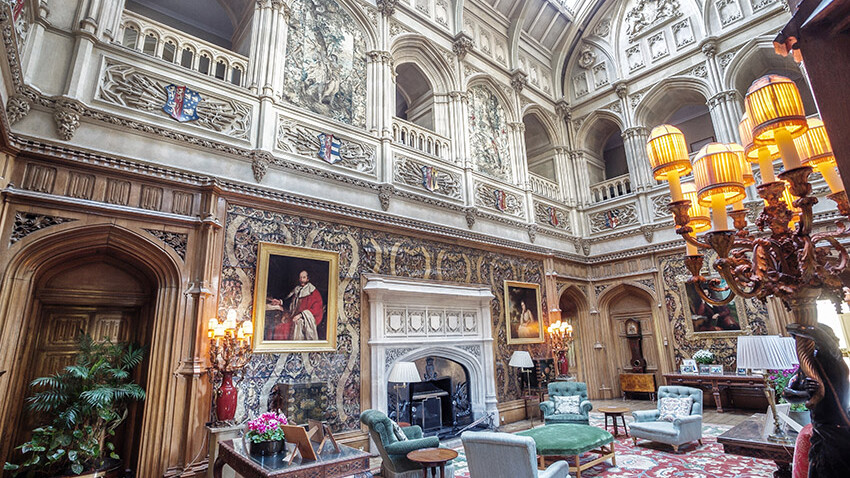
- Christmas
- Community
- Dogs & Horses
- Egypt & Tutankhamun
- Entertaining
- Farm
- Filming
- Gardens
- History & Heritage
- Daily Life
- Royalty
- Cooking
- Interiors
- Heroes
- Architecture
- Cars
- Conservation
- Downton Abbey
- Events
- Gardens & Landscape
- Highclere Castle Gin
- History
- Planes
- Restoration
- Stories & Books
- Uncategorized
- Visitors
- Wildlife
86 Comments
It is very nice to utilize what nature has left and transform it into something everyone can appreciate.
Just beautiful—I hope to come back soon and see it for myself! Always enjoy your blogs My lady….have a fantastical day!
That is just amazing and beautiful. So need to have it on the big tree like that. Fantastic idea
Lady Carnarvon lovely pictures of the green man did you lord Carnarvon have a lovely weekend the weather is lovely sunny thank you for the email you send me and lovely to visit highcelere castle
Lady Carnarvon lovely pictures of the green man did you lord Carnarvon have a lovely weekend thank you for the email you sent me and the weather is sunny and lovely to visit highcelere castle
After a mile or so, a sign directs you to the left where the road leads up a slope and you will see the tree on the left.
Thank you!
What a creative and engaging mind you have Lady Carnarvon! Thank you again for the informative and educational Monday blog. I will look forward to seeing this new tree carving and floral growth the next time we come across The Pond. Continue to remain well and enjoy spring season blooming around.
How informative and interesting this article was. Thank you so much for all your interesting blog posts. It helps those of us that are so interested in British history and Highcelere Castle.
Dear Lady Carnarvon,
the carving is beautiful, a very clever idea, the tree has a new life, and the green man is very appropriate. He appears a lot in Somerset, in particular in Glastonbury, just up the road from me. If that tree could talk, imagine the wonderful stories it could tell! You could hold a green man mini festival in August with folk music to compliment the cocktails! Seriously good fun!
Jane
Dear Lady Carnarvon,
the carving is beautiful, a very clever idea, the tree has a new life, and the green man is very appropriate. He appears a lot in Somerset, in particular in Glastonbury, just up the road from me. If that tree could talk, imagine the wonderful stories it could tell! You could hold a green man mini festival in August with folk music to compliment the cocktails!
Jane
Thank you
I absolutely love the incredible hulk, such a brilliant idea to carve a wonder from broken nature.
My husband, who is a Christmas Carol fan, wanted to know why the Ghost of Christmas Present wore the green robe. Now we know. Such an interesting story. Thank you.
Thank you
Dear Lady Carnarvon,
Wonderful idea, I look forward to seeing this on our next trip to England and to Highclere Castle! Would also love the recipe for Luis's beautiful cocktail. We keep our bar well stocked with Highclere Castle Gin!
Roberta Fox
Chicago
I look forward to greeting you next time!
Great to hear!
Dear Lady Carnarvon,
Thank you for your post. They never fail to teach me something new and brighten my day. Your Green Man is fabulous!
Sincerely,
Jaime Pierce, Texas
He is fabulous I agree!!
How lovely! We have been suffering from Emerald Ash Borers and Pine Beetles, and have lost a number of large trees on our property. Perhaps I can commission some carvings of Green Men, as well. Thank you for the inspiration!
Lady Carnarvon, It is a welcoming sight for the visitors coming to Highclere Castle. Beautiful. Cheryl
What a spectacular way to make lemonade of lemons. The carving is a perfect way to salvage the remains of a downed tree. It will be lovely when flowers are planted around it. Please post another picture when the flowers have settled in. Although I'll never be able to visit, I am so thankful that you take such good care of such a beautiful and historical place. In my fantasy world, I live in Downton Abbey.
Love this story of the green men. I have a fallen crepe myrtle that I loved so much. I named her Myrtle and thrilled at her cascading fuchsia every spring. Though she was old and a bit bent over she sent glory from the top of a small hill. I am thankful for your lovely idea of roses and honeysuckle.
Thank you
The green man is alive all over the estate, Lady C. Bright ideas are good... please keep them coming!
What a lovely idea and how great it is that you appreciate the traditions of your beautiful place. Here in the suburbs of Chicago there is a light dusting of melting snow but the tops of the tulips and hyacinths are coming up through the ground. Spring is almost here.
Lady Carnarvon, my sisters and I are beloved fans of the “Downton Abbey” series and wish we could visit. We live in Ohio, USA, so I doubt this will happen. But I continue to follow your blog and enjoy every little bit of information about the happenings! Sue
Dear Lady Carnarvon,
Beautiful carving, I like the sound of the Gin cocktail too.
best wishes
Lorraine xx
Another good reason to visit Highclere again! Such a brilliant job Mr. O’Rouke did, and I hope your excellent idea did not get you into trouble with your husband……
Lovely.
How astonishingly lovely that is, and will be as your vines grow. Here on our little farmstead in Kansasland, we have saved several large stumps such as this for the wild Falcons and other birds of prey who I read prefer standing deadwood. It only took a year for a family of great horned owls to plant their flag on one outside my bedroom window. I'm sure some of these will find your lovely sculpture as well. I cannot wait to see yours in person!
We will most definitely look for this upon our arrival this Sunday! We're so excited!
Great minds think alike!
I too had a huge cedar tree that after 45 years had finally given up on life, and needed to be felled.
My Mother had planted these trees, at the home I grew up in, and later purchased from their estate, so I wanted some remembrance. I had the tree cut off about at about 4 feet above the ground. The trunk was huge, so I gave a lot of the lumber to wood worker friends.. and had the remaining stump fashioned into a chair where I can think of wonderful days of the past.
So delightful! He's benevolent ,not scary like others I've seen...How about a name to honor his oversight of you and yours?
Lovely sculpture of The Green Man, he looks rather kindly! I’ve seen a few Green Man sculptures which have been quite stern and steely looking, not yours though he’s delightful….
Thank you
How lovely
Maybe one day?
You are always welcome to visit
What a wonderful memory of growing up!
Dear Lady Carnarvon
I hope all is well.
Cheers to the green man all round - so beautifully carved.
What a wonderful addition to the estate. He will truly be a guardian of the trust.
Great idea! Keep the juices flowing and keep adding to the mystery and history of Highclere. Always something new added that will enhance the beauty of the woodlands.
Lady Carnarvon,
Thank you for another delightful story to broaden my knowledge! I would love to hug the Green Man, I like to think he looks as benevolent as possible, given his split personality!
Martha G
I would also like to suggest to your readers another idea:
When taking out large branches with diameters of 5 to 10 inches....consider cutting these sections out from the tiny branches all over the rest of the limb.
Contact a wood turning group----they would love to have these logs to make wood glasses, small bowls, and salt containers, etc.
I have 20 various Japanese maple varieties in my garden around my home. A lovely lime green maple had beautiful yellow coloring inside its branches. I had to take it down as it was 2 1/2 feet from front sitting room window and required constant trimming and got too tall for the front of the house curved window. I cut down and disposed of all the branches but left a lovely 3 foot section, a round log essentially attached to the ground. I contacted a wood turner since my husband has a wood shop and has occasionally done some turning projects, but we are both 72 and have lots of back pain, etc.....
The wood turner who came to my house was fantastic!!!!!!! Because he brought a horizontal cutting saw that cut the trunk off totally at ground level!!!! I was thrilled as all I had to do is add pine straw around the knock out roses, and pots of fire red nandina. You would never know a large tree had been there----and I can only imagine the BEAUTIFUL goblets, glasses, etc. he could make with the gorgeous bright yellow veins in the tree.
Any hardwood stump would probably be appreciated by wood turning craftsmen.
Fondly, Mary Beth Borchardt, Atlanta, GA area, US
Dear Lady Canarvon
Your Green Man sounds like a lovely fellow to have around. In Iowa, USA, where I live, we don’t carve green men (although I have seen some on old buildings) but some folks, when faced with a large stump like yours, will hire a chain saw carver to come in and carve an animal or bird. We have a friend who likes to feed the birds and when his tree died, had a carver come in and make an owl. However, what he found was that the birds actually thought it was and owl and stopped coming to his feeders. Fortunately, the carver was able to change it to a bear, so problem solved and the birds returned. Your Green Man should look inviting with flowers. The cocktail doesn’t sound bad either.
I smiled at your comment re when you had your "bright idea" about sculpting the Green Man's face.
Appreciate the history you gave regarding the Green Man. Simon's sculpture is marvelous and I can't wait to see your plantings incorporated around it.
Dear Lady Carnarvon,
Green Men are indeed fascinating. They literally have been in existence for millenia, with the ruins of Hatra (modern day, Iraq) containing a sculpture of a Green Man that apparently dates back to the 2nd Century. I believe there are similarly dated Green Men to be found in Lebanon and Turkey.
In the tales of King Arthur and the Knights of the Round Table, Gawain initially confronts but later works with ‘The Green Knight’ who scholars generally consider to be a symbol of the Green Man.
One cannot forget the famous ‘Seven Green Men of Nicosia’ that were carved into the facade of the 13th Century Church of St Nicholas.
Indeed, Green Men can be found around the world. Green Men ‘appear’ in Germany (The Bamberg Cathedral), Jerusalem, Nepal, India and Borneo.
In North America, the Native American/First Peoples refer to the “Ngen-Mawida”, being the Native American keeper of the forests.
From the Native American Encyclopedia:
“The Ngen are those that manage, govern and arrange the different features of nature; but also those that nature takes care of and protects.“
Your ‘Green Man’ is very dignified. Simon O’Rouke has done a particularly fine job. His work seems analogous to what Michelangelo has been quoted as saying about his masterpieces, that “The sculpture is already complete, within the marble block, before I start my work. It is already there, I just have to chisel away the superfluous material.”
Of course, where are the Green Women? With the 8th March being “International Women’s Day”, maybe it is now time to break with the ‘tradition’ of almost 2000 years of Green Men and introduce a Green Woman.
And speaking of which, I take this opportunity to thank you, Lady Carnarvon, for being such an amazing and inspiring woman.
To you and indeed all women associated with Highclere and all women who read this blog, I wish you each one of you a very happy International Women’s Day. Feel special and unique. You deserve to be on top of the world!
With kind regards,
Jeffery Sewell
What an inspired idea! I hope that you will share photos of the climbing blooms that you plant there during their season.
Although I studied Egyptian Ancient Art History in college, I missed that Osiris was a grain deity with a green face. Thankyou for the excellent image and now I can check off "learn one new thing" for today's list! :-)
I am looking forwarding to Friday's Viking.TV Home at Highclere special session with you discussing significant Highclere women. Can't wait (but I must)!
A summery 80 degrees and breezy here in March. I hope that you are enjoying fine weather as well!
I found your post very interesting, especially when you mentioned the various carvings found on the walls of many cathedrals.
Many years ago, I had in my possession a horse brass which had the form of a carving known as the "Lincoln Imp", which is a carving found on the wall of Lincoln Cathedral. Someone I knew at the time looked at it, and identified the image as a form of the Celtic horned god Cernunnos (the horned one). Apparently, when Lincoln Cathedral was originally built, some of the workmen who built it were Pagans, and they simply incorporated some of their own beliefs into the carvings.
I think we are all still a mixture of beliefs - those that help us cope with death and superstitions that help us cope with life!
Thank you
THank you!
We are all fine thank you - but our hearts are with those in Ukraine - they are an extraordinary nation and their President a leader in the trenches
We do try and do all we can
Dear Lady Carnarvon, you wrote a very interesting and curious article. Nowadays more than ever we all need a Green Man who protects us ,comes and gives us the strength of rebirth and restart. Memories of cultural and folklore events form the basis in order to know yourself, your past and build a new and better future, a "new era". "Fear not for the future, weep not for the past "(Percy Bysshe Shelley).
Have a beautiful week!
Downton Gazette
Dear Lady Carnarvon:
Thank you for your Monday blog and sharing your clever idea. A nice inspiration for International Women's Day, which will be celebrated tomorrow.
I saw your Instagram post over weekend and looked forward to reading today's story. As always, I learned something new and am really impressed by the handiwork of the sculptor, (Mr.) Simon O'Rourke.
So, until next week, please keep the refugees leaving the Ukraine and those that must remain behind in prayer and thought.
Perpetua Crawford
Dear Lady Carnarvon,
The Green Man is absolutely wonderful. As a child, one of my favorite things to do was to look for faces and objects in clouds, plaster swirls on ceilings....using my imagination to conjure all manner of people, animals and other beings. I think your Green Man fits right in with the incredible imagination of Simon, and you, seeing that marvelous face emerging from the trunk of that glorious cedar tree.
Well done! And of course....a Highclere Gin cocktail to immortalize the completion of the new addition to the magnificent Highclere Castle!!
Please stay well and safe.
Best regards,
Charlotte Merriam Cole
I just love this piece . . . the history and the carving . . . the whole idea and legend of the Green Man. It’s new to me; I had not heard of it before. Looking forward to more photos when the vines and roses begin to grow! Carving this tree stump was a wonderful idea.
Fabulous and timely ideas all round!
Love this!❤️
Love this!❤️ I wish we had Green Man around here!
Dear Lady Canarvon,
Another wonderful idea and I’m sure Lord Canarvon would agree that your Green Man is magnificent and a stunning addition to your beautiful home. Mr Rourke is incredibly talented.
Kindest regards,
Lynne
NSW, Australia
I hope the people of Ukraine are in all our hearts and our governments do all they can ... to support in their country and to offer sanctuary
Thank you- you too!
Another fabulous blog! Your "ideas compartment" Lady Carnarvon is brilliant. Love the Green Man.
Pauline
Qld Australia
Good evening! I hope when Luis creates this new cocktail that you will share the recipe in your blog. Many thanx.
Dear Lady Carnavon
Thank you for such an interesting blog. I have been a fan of the Green Man for a long time and try to include a small one in most of the dollshouses I make .I do so appreciate your blog and the topics that you write about. Thank you very much keep safe and keep up the great work .fond regards Diva from Downunder .
I love your new Green Man! He looks a lot more inviting than the others. Your mention of Egyptian Green Man god, Osiris, makes me hopeful for my Viking cruise on the new Osiris in November. I’m looking forward to seeing his green face in the hieroglyphics in person. Thank you for another very informative and delightful lesson on re-using our natural resources!
I love him, Lady Carnarvon! What a terrific way to save the old tree and make something new from him. Can hardly wait until we see what you plant around him! Very clever idea and very talented sculptor!
Thank you
Dear Lady Carnarvon!
What a Great idea to make a sculpture of The tree! The Green Man looks fantastic!
Swedish greetings from Lena
Thank you
I have another, perhaps-bright idea for you…last year I visited a quirky island off the coast of Georgia (have also had the pleasure of visiting your oasis a few years back —a favourite, along with Linderhof, being somewhere one might actually feel comfortable LIVING)
Anyway, this island had a “treasure hunt” of green men, with a map for anyone interested. Some were very well hidden, others not, and mostly carved into knotholes where branches had been lost.
I spent an enjoyable afternoon poking into spots I’d never have seen otherwise…of course you would only put them in locations where you’d want your guests hunting about!
Dear Lady Carnarvon
What a fabulous idea! I will definitely look out for the new sculpture on my next visit. I am so looking forward to coming back to Highclere in July this year. It would be great if you have also developed a gin Greenman Cocktail by then for us to taste on our visit!
Many thanks for your continued inspiration
With best wishes
Sharon Major
Share the cocktail recipe once complete!
Lady Carnarvon,
Here in Louisiana we have some amazing old Live Oak trees that grow into monstrosities, bending their huge branches down to the ground and embedding themselves in the soil. The trees themselves are like old wise men with branches leaning this way and that, sometimes covered in Spanish moss or green mossy algae. Though we do not carve faces into them, these trees seem lifelike just through their immense size, shapes, and beauty. Many were planted on Louisiana plantation home properties by the original owners and planters of the time, in the 1800s. You would love seeing them!
We are coming to England on a cruise and landing on Sept 4 at Southampton. I just went to get tickets to visit Highclere, but am very distressed that they are sold out for Sept 5. When can we see Highclere Castle? We indeed hope you are not closed after Sept. 5 as we have longed to go there and planned this trip to do so at the end of the cruise! We are looking forward to seeing the grounds as well as the beautiful castle. Please inform us as to what to do.
Thank you for your blogs. They are so interesting and make my Mondays!
This is fascinating folk loric history.
Wonderful work of art. He will watch over the castle and all the members of your family im sure; for centuries to come. I bought your gin here in the USA, and it is of superior quality too! Thank you for sharing so much with us online.
Email the office!
I haven't visited Highclere YET, but I could visualize where the carving is just by your amazing description. I enjoy everything you share with us about your beautiful home and I hope to visit one day. Please pet your dogs for me. LOL.
Cannot wait to start travelling again and Highclere is the top of the list to visit. Really enjoy your sharing of your home,look forward to reading your blogs,take care. Hugs from Canada.
Thank you so much
I purchased a green man plaque after we visited your lovely home! He is now installed on a large oak tree looking east to the sunrise over our property
Thank you for sharing his origins

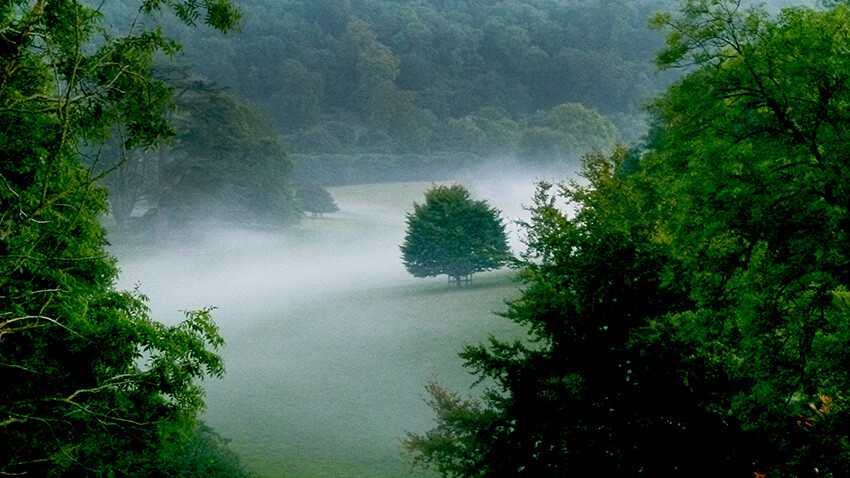
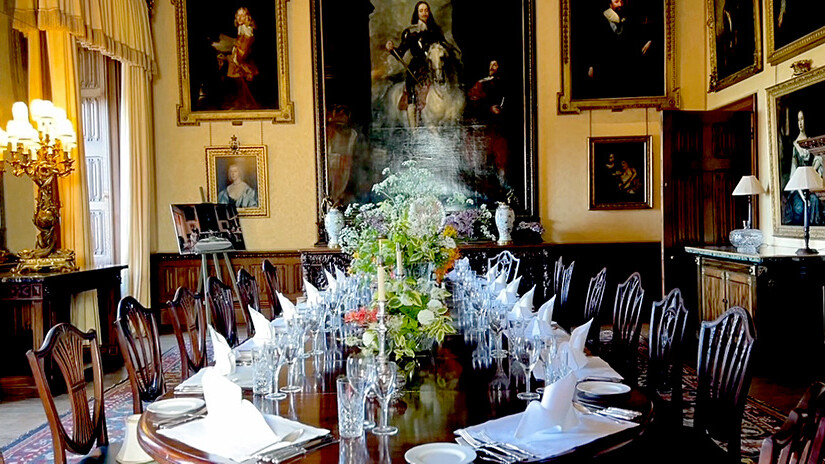
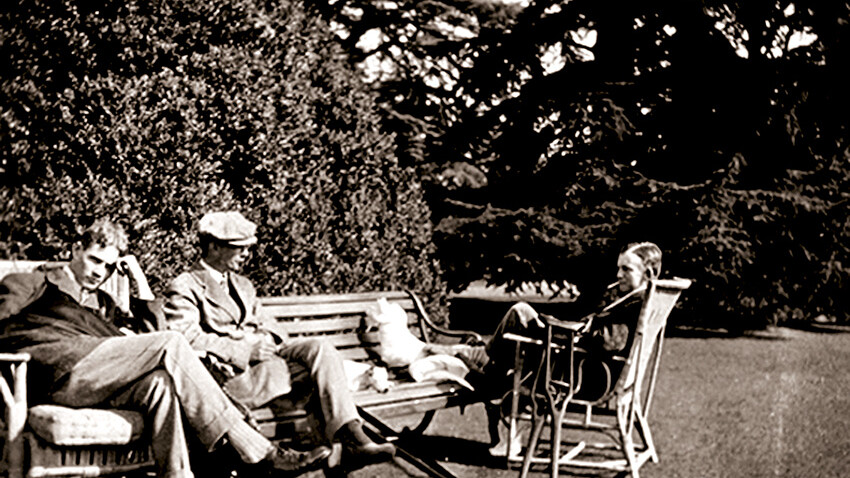
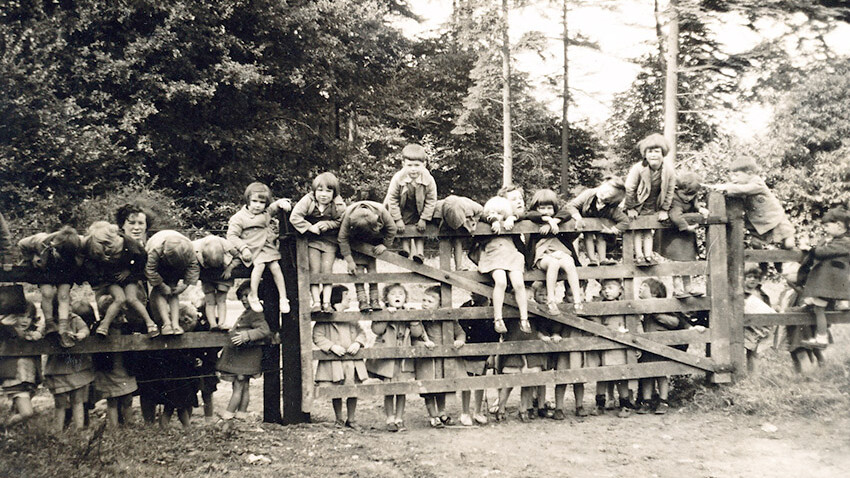
Where is this particular tree??